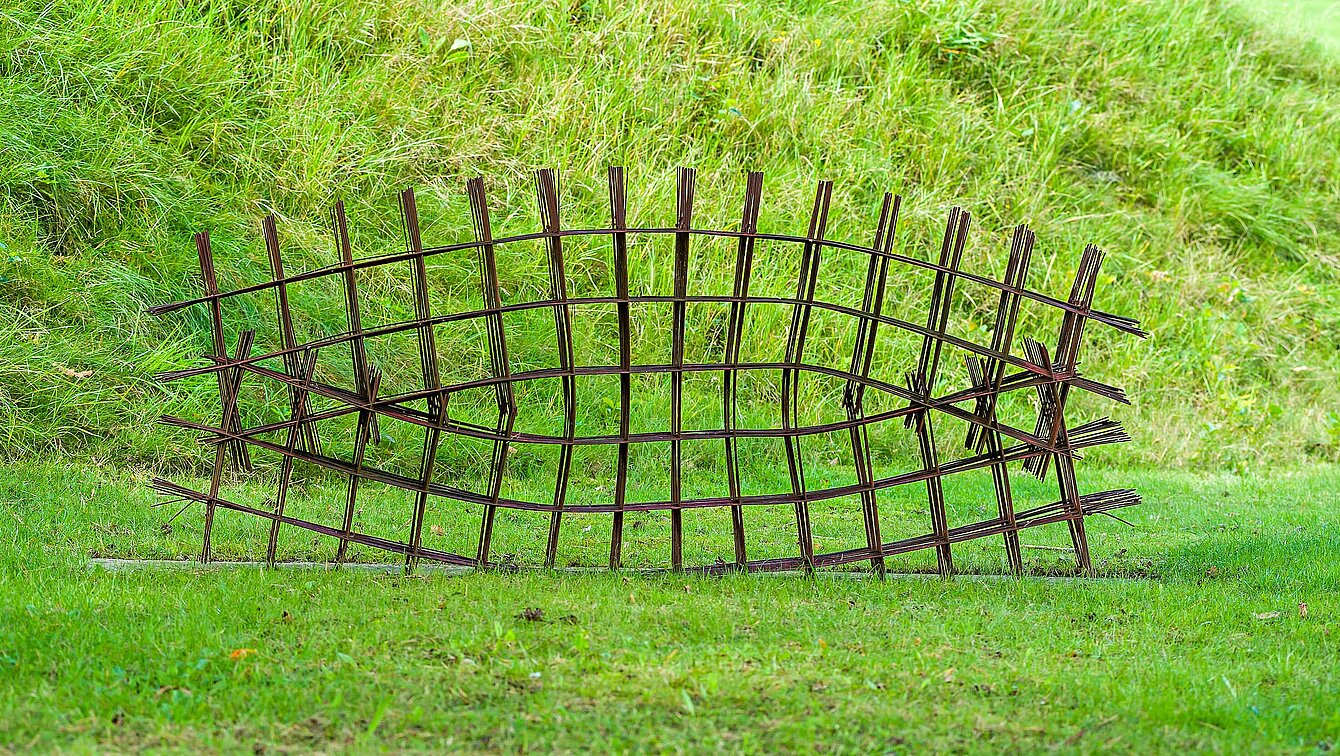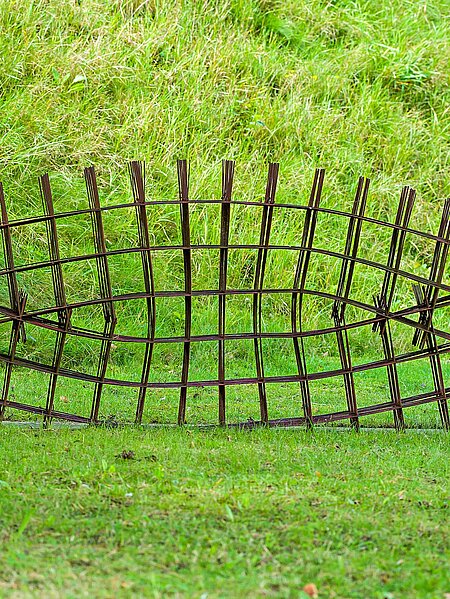Perrin’s sculpture of structural steel mesh gauges the open space through the jutting rods, which suggest that the construction could have continued on further. The weaving, connecting and interlacing of support lines serves to highlight the fact that three-dimensional bodies are also defined by their supporting and structuring texture. In a sense, the body is created from the idea of filling in the holes between the lines —similar to how a textile is produced by weaving, felting and milling.
Untitled
Carmen Perrin, 1990


Image Credits
Author
Elisabeth von Samsonow
Location on map
Poition 18
Owner
Österreichischer Skulpturenpark Privatstiftung
Artist biography
Carmen Perrin
Show all
About the sculpture
A three-dimensional body cannot only be defined via volumes and spatial delineations, but also via the texture that supports and structures it from the inside.
The braiding, interweaving and linking of structuring lines that behave like spatial vectors and describe the striving of forces within a body is one of those traditional technologies that are equally important as the plastic processing of malleable substances – sculpturing in the true sense of the word – and that are a reminder of the architectural aspect of the sculpturing process.
Today, structural steel grids have replaced the ancient technique that relied on twigs and wooden sticks – the archaic armouring of a wall that bears a distinct resemblance to textile garments.
The grid as a system of order that defines space is omnipresent: we find it in the crossing coordinates of the longitudinal and latitudinal lines as well as in the “knitted” patterns of computer design programmes such as CAD, which depict space through virtual encodings.
What all these techniques have in common is that they imply the idea that bodies can be produced by filling in the gaps between condensed bundles of lines. Bodies are thus built up from the inside, from their structural genome, in the way that Deleuze and Guattari described the creation process of textile structures in their discussion of space in their book “Mille Plateaux“: in terms of cultural skills, threads are condensed either on looms or with the help of techniques such as felting or milling.
Carmen Perrin’s sculpture describes a curvature, the spatial belly of an undefined creature that sees itself as a “building site”, and on whose “top floor” the forest of jutting structural steel bolts indicates that the sculpture is gauging the open space and could in fact grow even further.


















